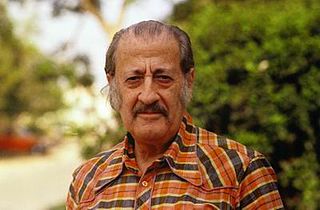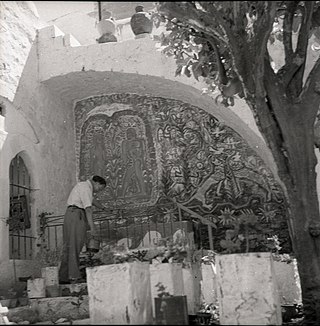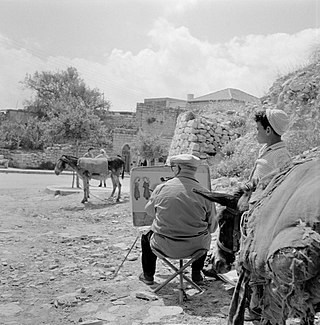Michel Kikoïne was a Lithuanian Jewish-French painter who belonged to the Ecole de Paris art movement.

Théophile "Théo" van Rysselberghe was a Belgian neo-impressionist painter, who played a pivotal role in the European art scene at the turn of the twentieth century.

The School of Paris refers to the French and émigré artists who worked in Paris in the first half of the 20th century.

Shimshon Holzman was an Israeli landscape and figurative painter. He is known worldwide for his water color paintings.

Yitzhak Frenkel, also known as Isaac Frenkel or Alexandre Frenel, was an Israeli painter, sculptor and teacher. He was one of the leading Jewish artists of the l’École de Paris and its chief practitioner in Israel, gaining international recognition during his lifetime.
Joseph Kossonogi was an Israeli painter.

Moshe Castel was an Israeli painter.

Avigdor Stematsky (1908–1989) was a Russian Empire-born Israeli painter. He is considered one of the pioneers of Israeli abstract art.

Ori Reisman (1924–1991) was an Israeli painter.

Visual arts in Israel refers to plastic art created first in the region of Palestine, from the later part of the 19th century until 1948 and subsequently in Israel and the occupied Palestinian territories by Israeli artists. Visual art in Israel encompasses a wide spectrum of techniques, styles and themes reflecting a dialogue with Jewish art throughout the ages and attempts to formulate a national identity.

The Israeli pavilion houses Israel's national representation during the Venice Biennale arts festivals. Jewish Israeli artists first participated in the 24th Venice Biennale in the Erez Israel, Artisti Palestinesi pavilion. Israel first participated in the 25th Venice Biennale in 1950.

The Beit Castel gallery, בית קסטל, is a gallery in the Artists' Colony of Safed. It is unique in its adherence to hosting art of a diverse range of artists from the Artists' Quarter of Safed with a special focus on the golden age of art in Safed.

Frenkel Frenel Museum is an art museum in the northern Israeli city of Safed. It was also known as Frenkel's Castle in the press.

The Histadrut studio of art was the first art academy in Tel Aviv in Mandatory Palestine. Founded by Isaac Frenkel Frenel, it was active from 1926 to 1929. The Jewish labour union known as the Histadrut provided some funding and therefore the studio used the Histadrut name.

Mordechai Levanon was an Israeli painter. He was one of the foremost Israeli landscape painters. He was the winner of the Dizengoff prize in 1940 and 1961. He was enchanted by Erez Israel's light, and the cities of Safed and Jerusalem; all of which feature heavily in his paintings.

The Artists' Quarter in Safed, also known as the Artists' Colony; was founded with the liberation of Safed, in the war of independence (1948-49). With the encouragement of the Safed municipality, a group of artists began to restore ruins in the Mamluk neighborhood of Harat al-Wata, on the border of the historic Jewish quarter, to build galleries and open exhibitions. The first artists to settle in Safed however arrived several years beforehand. The first to discover Safed's artistic aura was Isaac Frenkel Frenel in 1920 and following him Moshe Castel and Mordechai Levanon in the 1930s.
Ha-Tomer is an art cooperative that operated in 1920 in Tel Aviv-Yafo. Its members were among the first to support and implement modernist art in Israel.

Jacob Pereman was a Zionist activist, poet, thinker, biblical scholar, bibliographer, an art and book collector, expert and pioneer in the research of Jewish art and in its introduction to the general public in the Land of Israel.
Aharon Avni (Kaminkovitz) was an Israeli painter, born in Russia, a member of the 'Massad' group, founder of the 'Avni Institute,' and one of the founders of the HaMidrasha For the arts.















